Dry lips in the morning, a scratchy throat, and a partner nudging you to stop snoring can feel like a routine. Open mouth posture during rest is common, yet it often goes unaddressed. A simple tool can nudge breathing back through the nose and support overall facial posture without feeling restrictive: Myotape.
A practical guide to Myotape for open mouth posture
Nasal breathing supports healthy airways, supports dental health, and can help sleep quality. Many people slip into open mouth posture due to congestion, habit, or muscle fatigue. Over time this can affect jaw position, tongue posture and the way the face grows in children.
Myotape is designed to encourage a gentle lip seal while keeping the mouth available if you need to speak, cough, or open suddenly. It is a small product with a surprisingly big impact on routine.
Why open mouth posture matters
Breathing through the nose is not just about comfort. It filters particles, warms and humidifies air, and encourages nitric oxide production, which supports blood flow and gas exchange. Mouth breathing bypasses many of these benefits.
Common knock-on effects include:
- Dry mouth and higher risk of tooth decay
- Snoring and fragmented sleep
- Jaw tension, TMJ discomfort, or facial muscle fatigue
- Reduced exercise tolerance due to air dryness
- Daytime sleepiness and morning headaches
For children, persistent mouth breathing can influence dental arches and facial growth over time. For adults, it tends to reinforce an unhelpful habit loop that becomes hardest to break during sleep.
What Myotape is and how it works
Myotape is an elastic adhesive tape that fits around the lips rather than across them. The centre stays free so you can part your lips if needed. The elastic tension brings the lips together lightly, prompting the brain to switch back to nasal breathing.
Key points that set it apart:
- Gentle elastic tension rather than a rigid seal
- Mouth remains accessible for speech and safety
- Hypoallergenic adhesive designed for facial skin
- Sizes for adults and children
That gentle feedback is the core idea. Instead of forcing the mouth shut, Myotape reminds facial muscles to rest in a better position. With consistent use, many find the daytime lip seal starts to hold on its own.
What the research suggests
There is growing interest in simple aids that promote nasal breathing during sleep. Small trials of mouth taping report reduced snoring frequency, lower mouth dryness scores, and improved partner-rated sleep quality in some users. Preliminary work in mild sleep disordered breathing has reported benefits in snoring intensity and AHI when mouth breathing is reduced, particularly when combined with nasal dilators or sleep position changes.
Large-scale studies are still limited, and outcomes vary with nasal patency, body position during sleep, weight, and habit strength. That said, the physiological reasons to favour nasal breathing are well established. Myotape sits within this wider picture as a behavioural cue that supports a lip seal without fully occluding the mouth.
Who might benefit
People who often find their mouth open at rest or during sleep may see value. That includes:
- Those who wake with a dry mouth or sore throat
- Habitual snorers with clear nasal passages
- Orthodontic patients aiming to support lip seal and tongue posture
- Athletes seeking better recovery sleep by improving nasal breathing habits
- People who notice mouth breathing during screen time or long meetings
Children can benefit too, though only with advice from a clinician or qualified breathing coach, and only if nasal airflow is clear. If a child cannot breathe through the nose comfortably, see a healthcare professional before trying any tape.
When to avoid or seek advice first
Safety comes first. Do not use Myotape if any of the following apply:
- Blocked nose that is not relieved by simple care
- Current vomiting or nausea
- Recent facial, oral, or nasal surgery
- Severe skin reactions to adhesives
- Active respiratory infection with copious mucus
- Heavy alcohol, sedative, or sleep medication use
- Diagnosed moderate to severe sleep apnoea without medical guidance
- Panic disorder or conditions worsened by facial coverings
If you use CPAP, speak to your sleep clinic. Some people combine nasal CPAP with lip support under clinical supervision, but this requires personalised advice.
Step by step: how to use Myotape safely
Start slow. Treat this as habit training rather than a sprint.
-
Skin check and patch test
Place a small piece of the tape on the cheek for 20 minutes. Look for redness or itching. If irritation lasts, do not continue. -
Clear the nose
Rinse with saline, use a prescribed nasal spray, or take a warm shower. Simple steam inhalation helps many people. If one side is blocked, try side-lying for a few minutes to allow congestion to shift. -
Prepare the skin
Wash and dry the area around the lips. Avoid heavy moisturisers right before application as they can reduce adhesion. A light lip balm is fine but keep it on the lips, not the skin around them. -
Apply the tape
Place the tape around the lips so the centre stays open. You should be able to part your lips slightly and speak. You should also be able to push the tape off quickly with your tongue if needed. -
Trial runs while awake
Use for 10 to 20 minutes during a calm activity like reading. Focus on light, quiet nasal breathing. If all feels fine, extend to a TV episode or a work block. -
Short naps
Once comfortable, try a short nap. Keep scissors nearby the first few times, purely for reassurance. -
Overnight use
Go to bed with the tape in place. Side sleeping often pairs well with nasal breathing. If you wake and remove it, that is useful feedback. Adjust nasal care and try again the next night. -
Pair with simple breathing drills
Two minutes of calm nasal breathing before sleep helps. Aim for lightness rather than big breaths. If you can hold a soft tongue-on-palate position without tension, even better.
Comparing Myotape with other options
Different tools aim for lip seal and nasal airflow in different ways. Here is a quick comparison to help you decide what suits your situation.
| Option | How it works | Strengths | Drawbacks | Best fit |
|---|---|---|---|---|
| Myotape | Elastic tape around lips, centre open | Encourages, does not force; speech possible; easy to remove | Adhesive can irritate some skin; single use | Habit training for nasal breathing during rest and sleep |
| Generic mouth tape over lips | Full or partial seal across lips | Strong cue; widely available | Can feel restrictive; harder to speak; safety concerns if nose blocks | Occasional use where a firmer seal is desired and nasal patency is reliable |
| Chin strap | Supports jaw elevation | Reusable; no adhesive | Can shift during sleep; may not stop lip parting | People who dislike adhesives or have beard growth |
| Nasal dilators/sprays | Increases nasal airflow | Targets root restriction; can be combined with tape | Variable comfort; rebound risk with non-prescription decongestants if misused | Those with narrow nasal valves or night-time congestion |
| Myofunctional therapy | Trains tongue posture, lip seal, swallowing pattern | Addresses muscle balance; long-term habit change | Requires daily practice and guidance | Anyone ready to commit to drills; children and orthodontic cases |
| CPAP or MAD | Medical treatment for sleep apnoea | Proven for diagnosed conditions | Equipment or dental device required | People with diagnosed OSA under medical care |
Many people combine options. A popular pairing is Myotape with a nasal dilator, especially during seasonal allergies.
Building better resting posture
Tape is a cue. The goal is a stable lip seal and tongue position without it. Key elements:
- Lips together without strain
- Tongue resting on the palate, lightly suctioned behind the front teeth
- Teeth slightly apart, not clenched
- Jaw relaxed with a gentle chin profile, not jutting forward
Useful drills:
- Tongue hold: press the entire tongue to the palate, hold for 5 to 10 breaths, relax. Repeat 5 times, twice daily.
- Mewl swallow: tongue on palate, swallow gently without grimacing. Avoid neck tension.
- Chew training: use firm gum like mastic or xylitol gum for short sessions to work the masseters evenly, switching sides.
- Light breathing: breathe through the nose with quiet exhalations, aiming for minimal chest movement. Two minutes before sleep can settle the system.
Do not force it. Mild fatigue in the facial muscles is normal at first, but pain is a signal to stop.
Integrating Myotape into a sleep routine
A steady evening pattern improves the odds of success. Try this simple checklist:
- Early evening: deal with nasal congestion, rinse with saline
- One hour before bed: limit screens or use warm settings
- 30 minutes before bed: gentle stretches, calm nasal breathing for 2 minutes
- Bedroom: cool, dark, quiet, with clean bedding
- Side sleeping encouraged; consider a body pillow
- Apply Myotape last, after your skincare routine
If you wake during the night and feel uneasy, remove it. The body often adapts within a week or two.
What to expect over time
Week 1
Getting used to the sensation is the main task. You might remove the tape during the night without noticing. That is common. Focus on comfort: nasal care, side sleeping, and shorter trials.
Weeks 2 to 4
Dry mouth on waking often reduces. Partners may report fewer noisy episodes. Some notice less thirst at night and clearer voice in the morning. If you still remove the tape, try a lighter skin preparation or a different size.
Weeks 5 to 8
Daytime awareness of lip posture improves. Many people start to keep a lip seal during quiet work without thinking about it. Mouth dryness may settle. Keep up with tongue posture drills to lock in this change.
Beyond 2 months
Some will continue nightly use. Others will reserve it for travel, allergies, or high stress periods when mouth breathing tends to return. Either path is fine. The aim is comfort and consistency.
Buying tips, care and skin comfort
A few practical details make life easier:
- Sizing: choose adult or child size as guided by the manufacturer. If between sizes, many prefer the smaller one for a firmer cue.
- Storage: keep in a cool, dry place. Heat can weaken adhesives.
- Single use: most strips are designed for one night. Reusing can reduce stick and increase skin friction.
- Skin prep: wash, dry, and consider a thin layer of barrier cream on the surrounding skin during the day, not immediately before use.
- Removal: peel slowly, supporting the skin with a finger. A drop of warm water or a little oil loosens adhesive.
- Facial hair: trimming immediately around the lips helps adhesion. Beards can make application tricky.
Cost varies by region. A monthly supply often sits in the price range of a few cups of coffee. If you intend to use Myotape long term, look out for multipacks.
Pairing with lifestyle tweaks
Small shifts magnify the effect:
- Hydration during the day, lower fluid intake late evening
- Allergy care and dust control in the bedroom
- Humidifier in dry climates
- Reduce late alcohol which relaxes airway muscles
- Maintain a steady sleep schedule
If reflux is part of the picture, discuss treatment with a clinician. Reducing night-time reflux can make nasal breathing easier during sleep.
FAQs
Is it safe to tape the mouth at night?
Myotape does not fully close the mouth and is designed to allow speech and quick removal. For healthy adults with clear nasal passages it is generally considered a low risk habit-training tool. If you have respiratory or sleep disorders, or concerns about safety, speak with a clinician first.
Will it stop snoring?
It can reduce mouth-origin snoring by supporting nasal breathing. If snoring comes from the soft palate or tongue collapse, the effect may be partial. Many people still report quieter nights.
Can children use it?
Only under professional guidance and only if nasal airflow is clear. Address allergies, enlarged adenoids, or structural issues with a clinician first.
What if my nose blocks during the night?
Remove the tape. Focus on daytime nasal care and try again when congestion settles. A nasal dilator can help in pollen season.
Will it help with exercise?
Training nasal breathing during rest can carry over to light and moderate exercise. For high intensity efforts, some people still switch to mixed breathing. That is normal.
Does it replace my CPAP or dental device?
No. Medical devices for diagnosed sleep apnoea should not be stopped without advice from your care team. Some combine nasal CPAP with lip support after consulting their clinic.
What about skin irritation?
Patch test first. Rotate placement slightly night to night. Gentle cleansers and a light moisturiser in the morning help the skin bounce back.
A simple plan to get started
- Week 1: daytime trials of 10 to 20 minutes, plus nasal care
- Week 2: short nap sessions, then first overnight attempt
- Weeks 3 to 4: consistent nights, add tongue posture drills
- Week 5 onward: keep what works, adjust what does not, and measure progress with a brief sleep diary
Track two or three signals: morning mouth dryness, partner feedback on snoring, and how refreshed you feel. Small gains add up.
Myotape is not a silver bullet. It is a prompt that helps the body choose a better default. With steady use, many people notice quieter nights, calmer breathing, and a more relaxed jaw. That is a welcome upgrade for something that fits in a bedside drawer.











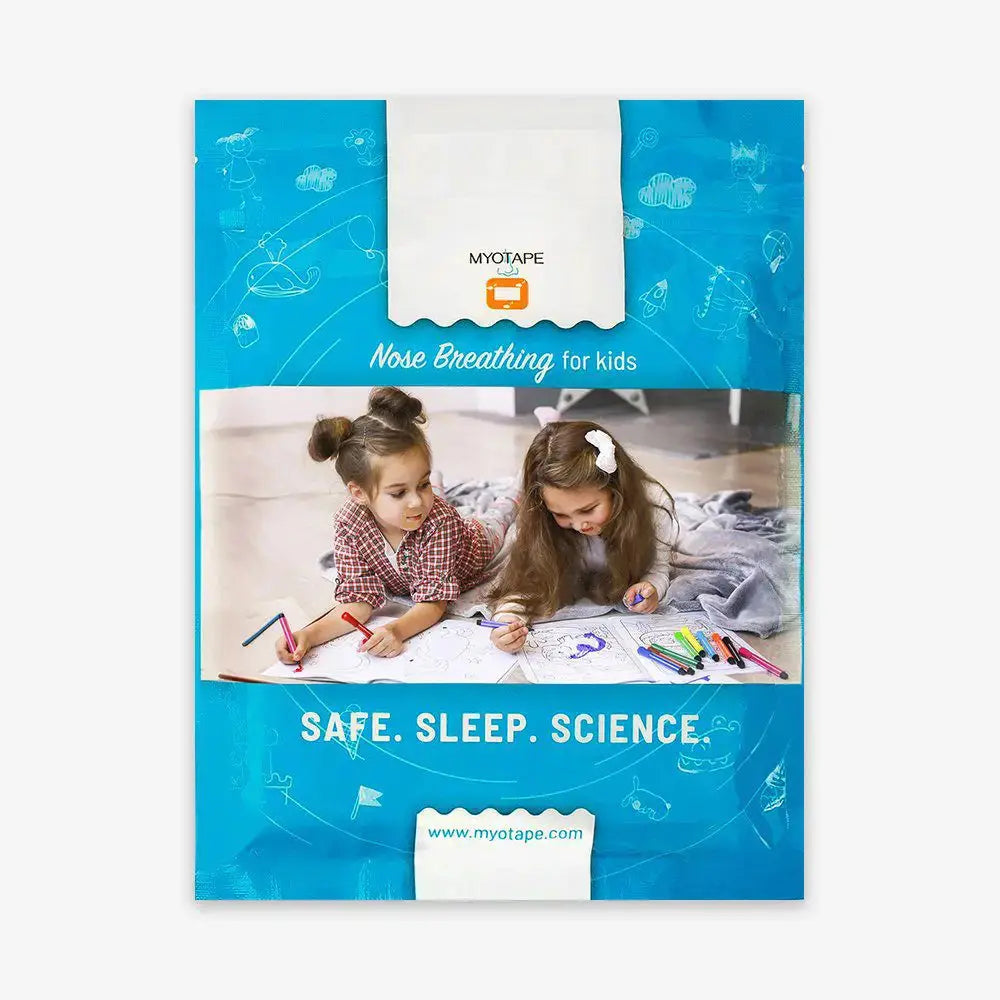
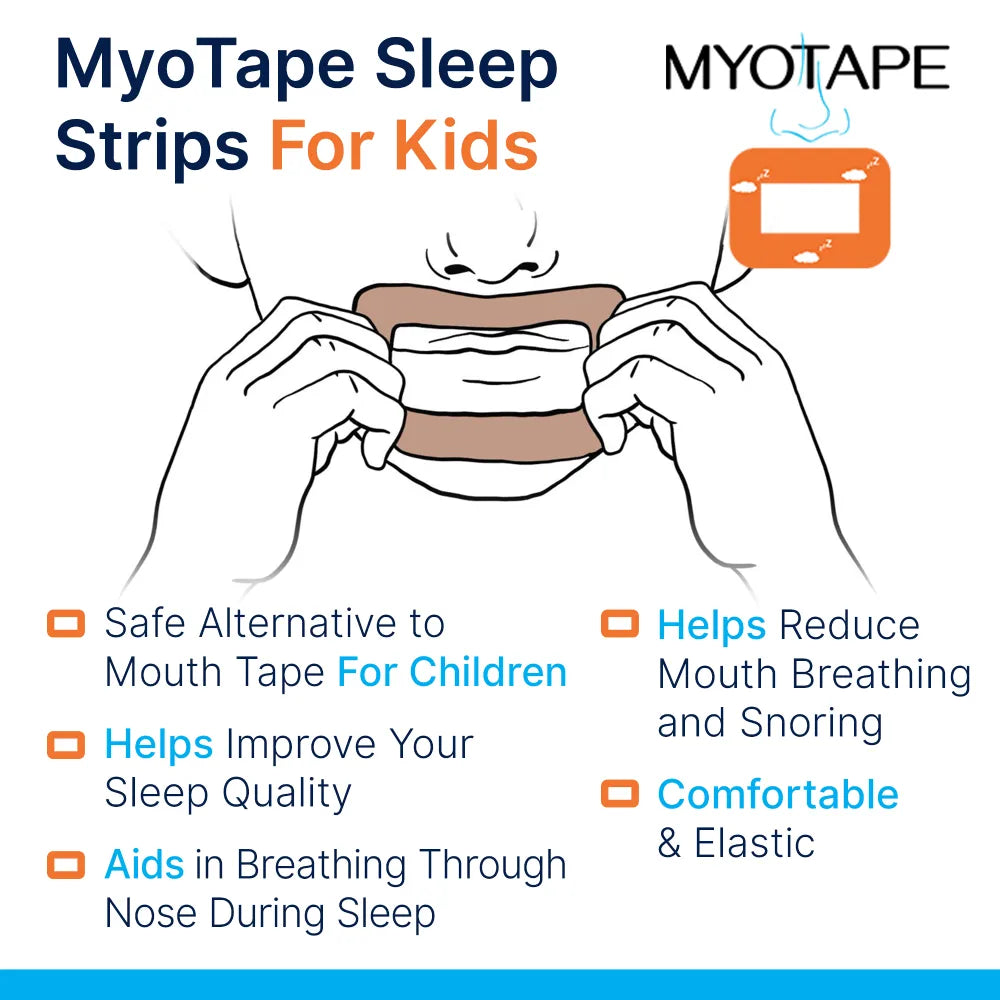
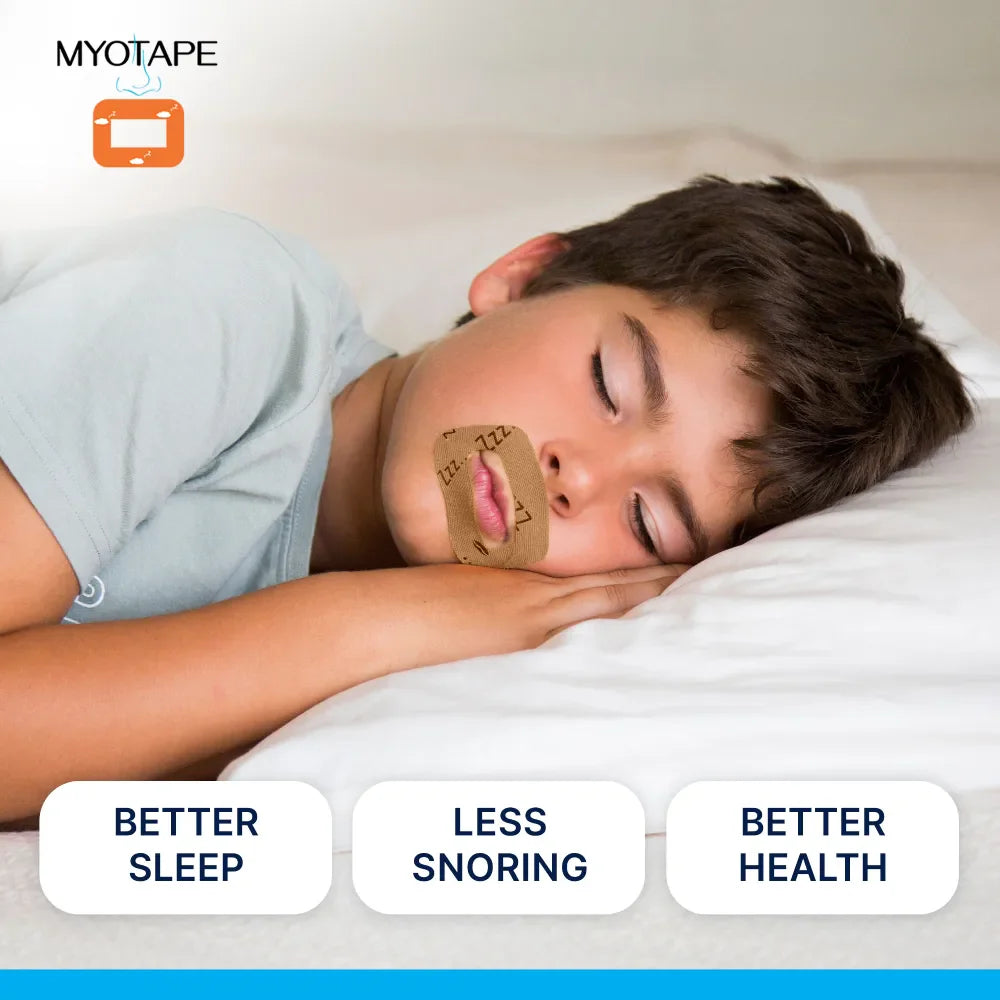
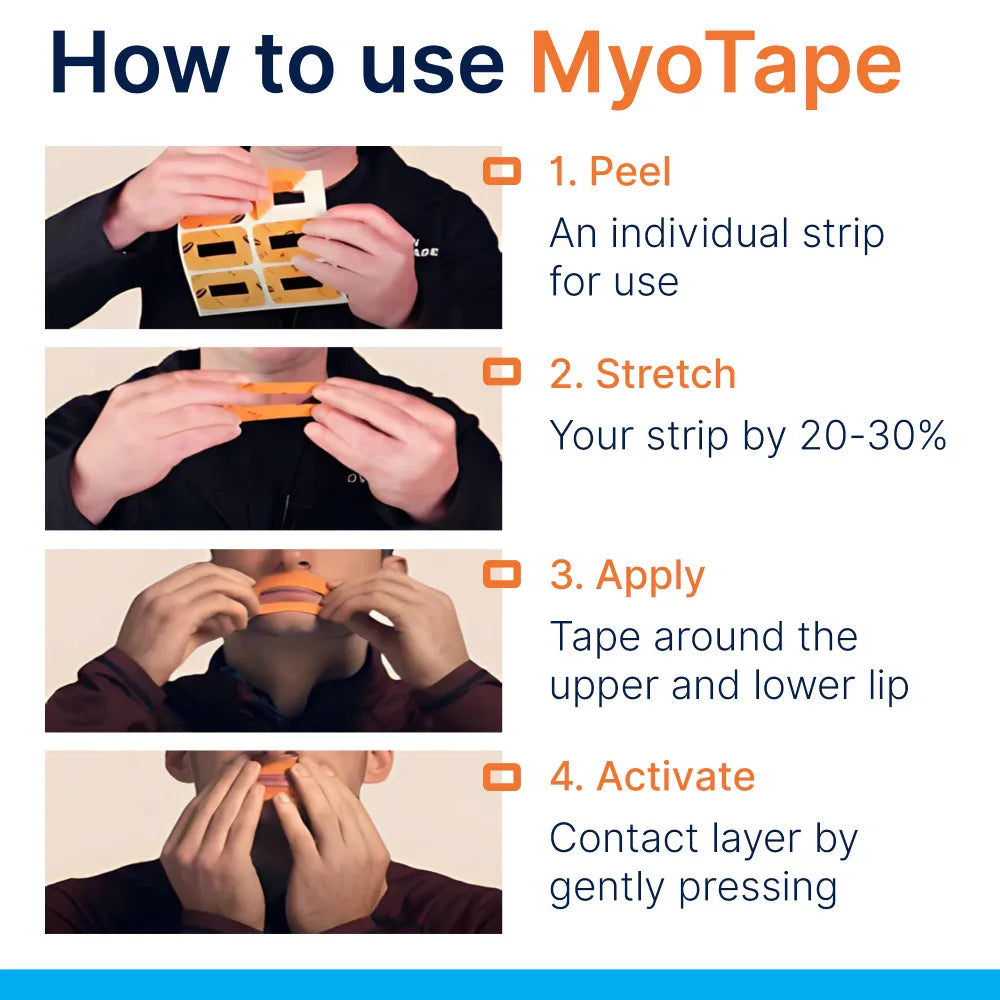
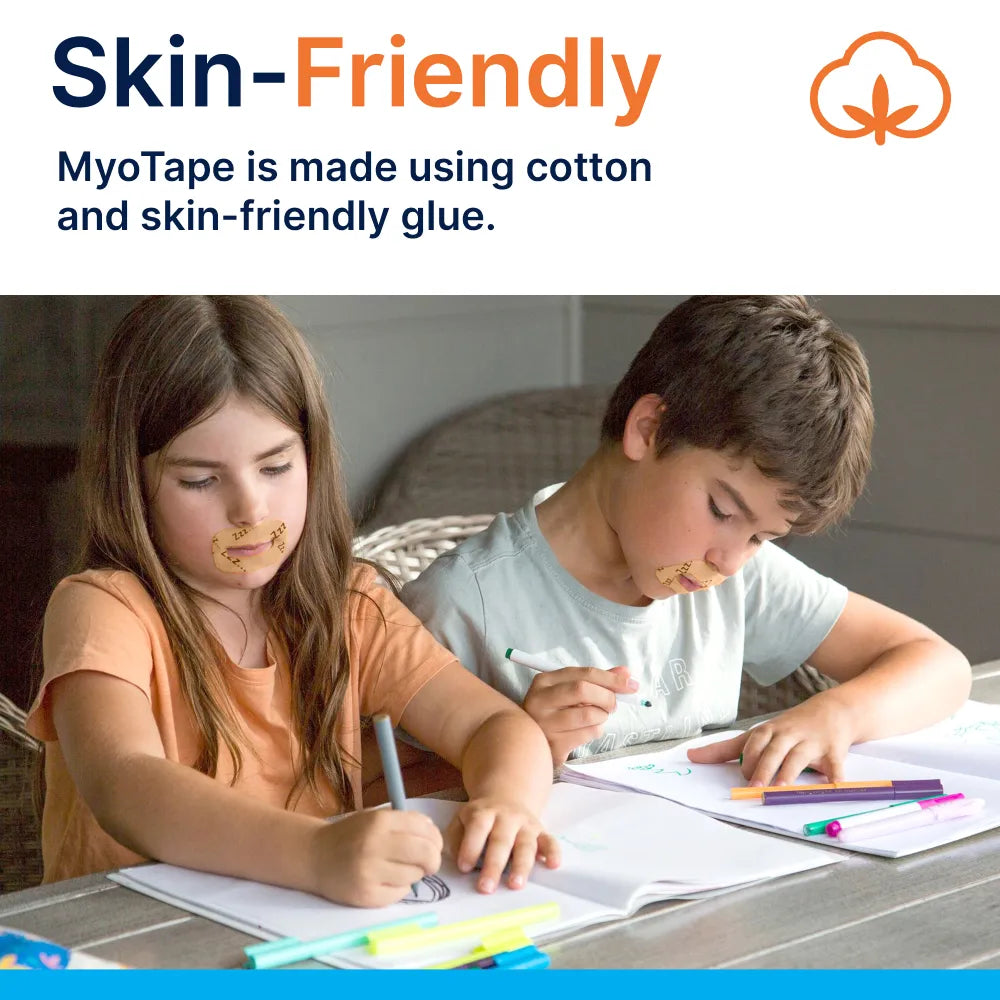










0 comments